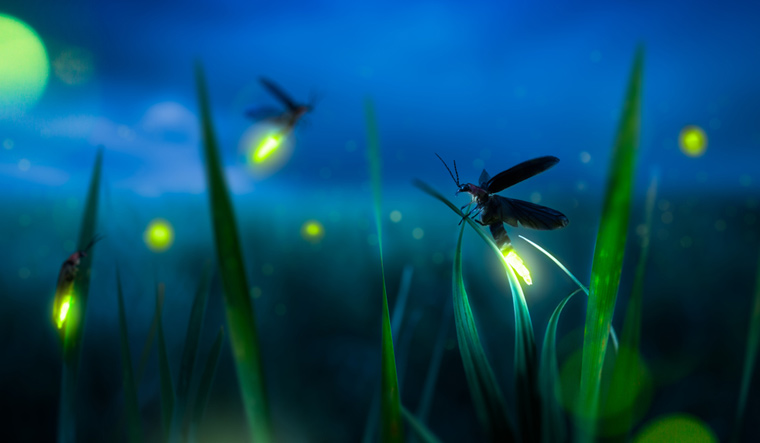Fireflies that light up the world are fast disappearing due to destruction of their habitat, pesticide use and light pollution, says a new study.
Fireflies light up summer nights to attract mates, defend their territory, and warn off predators.
The study, published in the journal Bioscience, raises the spectre of extinction for certain species of fireflies, and related impacts on biodiversity and ecotourism. Owing to housing and commercial developments, firefly habitats are beiing destroyed.
Fireflies belong to a widespread and economically important insect group, with more than 2,000 different species spread out across the globe, according to the researchers from Tufts University in the US.
To better understand what threats are faced by fireflies, they surveyed firefly experts around the world to size up the most prominent threats to survival for their local species.
The researchers highlight specific threats and the vulnerability of different species across geographical regions.
According to survey respondents, habitat loss is the most critical threat to firefly survival in most geographic regions, followed by light pollution and pesticide use.
"Lots of wildlife species are declining because their habitat is shrinking," said Sara Lewis, a professor at Tufts University.
"It wasn't a huge surprise that habitat loss was considered the biggest threat. Some fireflies get hit especially hard when their habitat disappears because they need special conditions to complete their life cycle," Lewis said.
For instance, she said, one Malaysian firefly (Pteroptyx tener), famous for its synchronised flash displays, is a mangrove specialist.
Previous work has revealed drastic declines in this species following conversion of their mangrove habitat to palm oil plantations and aquaculture farms, the researchers said.
 Fireflies attract mates with their glowing butts | Shutterstock
Fireflies attract mates with their glowing butts | Shutterstock
One surprising result that emerged from the survey was that, globally, light pollution was regarded as the second most serious threat to fireflies, they said.
Artificial light at night has grown exponentially during the last century.
"In addition to disrupting natural biorhythms -- including our own -- light pollution really messes up firefly mating rituals," explained Avalon Owens, PhD candidate at Tufts.
Many fireflies rely on bioluminescence to find and attract their mates, and previous work has shown that too much artificial light can interfere with these courtship exchanges.
Switching to energy efficient, overly bright LEDs is not helping, the researchers said.
Firefly experts viewed the widespread agricultural use of pesticides as another key threat to firefly survival.
Most insecticide exposure occurs during larval stages, because juvenile fireflies spend up to two years living below ground or under water, according to the researchers.
Insecticides such as organophosphates and neonicotinoids are designed to kill pests, yet they also have off-target effects on beneficial insects, they said.
The researchers also highlight risk factors that allow them to predict which species will be most vulnerable when faced with threats like habitat loss or light pollution.
For instance, females of the Appalachian blue ghost firefly (Phausis reticulate) are flightless, the researchers said.
"So when their habitat disappears, they can't just pick up and move somewhere else," explained J Michael Reed, a professor at Tufts.
(With input from PTI)



